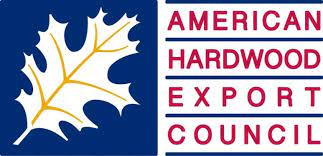Gutchess Lumber Co., Inc.’s “Words from Woods” series consists of a monthly article written by our fifth-generation President and Chairman Matthew Gutchess.
At the risk of over-simplifying a very complex and contentious topic, invasive species are usually defined as organisms which are not native to a particular area. To be considered truly invasive, the species must further be able to adapt easily to the new area, must reproduce quickly, and must harm property, the economy, or the native plants and animals of the new area.
Garlic mustard and swallow-wort, both introduced to North America from different parts of Europe around the 1800s, meet all of these requirements. Both can release thousands of seeds from a single plant, making biological control nearly impossible without unlikely community-wide efforts at eradication. Both crowd out native species in the forest understory; garlic mustard seems to do this by means of poisoning certain beneficial fungi in the soil which helps native plant species to grow. Both are harmful to the reproduction or other activities of native animal species, such as monarch butterflies. Deer—or at least my deer—avoid eating either, preferring to subsist upon native plants which might otherwise survive to compete with the invasives.
Amur, Tartarian, or Morrow’s honeysuckle—I think mine or the majority of mine are Morrow’s, but reading the descriptions and studying photos of all three I’m not 100% sure—native to different regions of Asia, are shrubs which can grow to heights of 20 feet or more. Honeysuckles with hollow stems are considered invasives. Birds eat the berries and disseminate the seeds widely. The shrubs seem to thrive along roadside hedgerows and in the understory of most trees, in my woods including under black walnut and black locust, tree species which typically hinder native competition themselves.
Invasive honeysuckles crowd out native species, perhaps more completely and dramatically than garlic mustard and swallow-wart do. They seem to alter the chemistry of the underlying soil so much that even following removal, the ground underneath can remain barren and devoid of other plants for as much as a few years. Like other invasives, deer don’t or can’t seem to touch it.
Here is an interesting 5-minute video on identifying invasive—or “bush”—honeysuckle and eliminating it: https://www.youtube.com/watch?v=Ts4sqG3weWY
As the video suggests, using glyphosate or triclopyr can be an effective way to control larger honeysuckle plants; glyphosate seems effective against garlic mustard as well, at least for an initial kill. Please BE CAREFUL when using such herbicides however, as they can and will surely cause unintentional harm to native plant species—or possibly animals, or people—if not handled against the targeted invasive plants correctly. Wear gloves, and take other recommended precautions.
In my woods, and as soon as I learned something about it, invasive honeysuckle stood out as the obvious first barrier to overcome on the way to improved forest health. (Today and because I am trying to promote heavy maple regeneration, deer have become the most obvious barrier, with garlic mustard and swallow-wart numbers two and three in some order.)
Happily, invasive honeysuckle has certain weaknesses which small landowners in particular with an interest in doing their own woods work might be able to exploit, either without using herbicides at all or in combination with them. The chief of these is honeysuckle’s determination to leaf out and do the bulk of its conspicuous growing very early in the season. In late March and early April, with snow or without it, this invasive is just about the only green thing one can find in my woods (though curiously, copious amounts of water can begin flowing through grapevine at these early dates too). This makes honeysuckle easy to locate on the ground and pull out by horizontal root systems which part easily from the soil, given their small size. The relatively pale green color of its leaves is another giveaway once other plant species become active. At any rate, by mid-May when honeysuckle becomes harder to immediately detect against the rapid growth of other vegetation, its most vigorous growth seems to be over for the year.
So, if you’re serious about controlling honeysuckle in a small woodlot—or you have ample time and interest in tackling a larger woodlot, or the invasive’s presence isn’t yet overwhelming—my advice would be to jump on it early. While I did a lot of clipping and pulling those first few years both before and following my harvest, less and less needs to be done with each new spring. Natives are slowly but surely reclaiming some of the bare soil.
Matt


